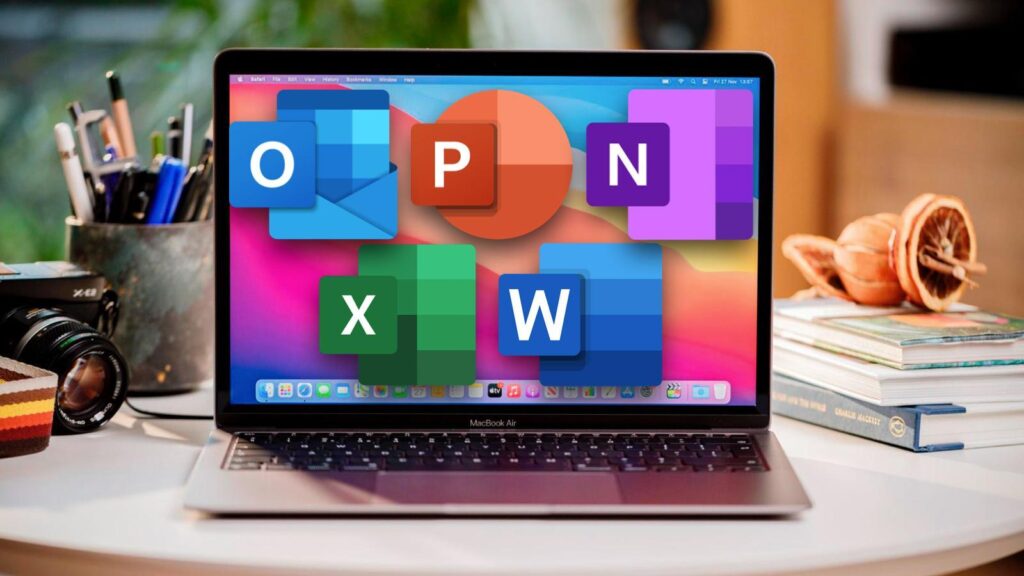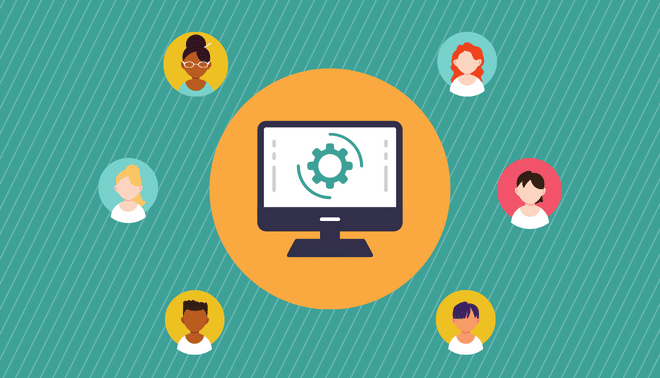The Real Cost of Free: A Guide to Cracked Software for Mac Websites
It can be tempting to look for a deal, especially when it comes to expensive software. A quick search might lead you to what seems like a goldmine: cracked software for mac websites promising free access to powerful applications. But before you click that download button, it’s crucial to understand what you’re really getting into. These sites often hide significant risks that can compromise your security, your privacy, and even your Mac’s performance.
This guide will pull back the curtain on these websites. We will explore the serious dangers they pose, from hidden malware to legal troubles. More importantly, we’ll show you the many safe, legal, and often free alternatives available to every Mac user. Protecting your digital life starts with making informed choices, and understanding the truth about cracked software is the first step.
Key Takeaways
- Significant Security Risks: Cracked software is a primary channel for distributing malware, ransomware, and spyware, putting your personal data at severe risk.
- Legal & Ethical Issues: Downloading and using cracked software is illegal copyright infringement, which can lead to legal consequences. It also harms developers who create the software.
- Performance Problems: Unofficial software can cause your Mac to slow down, crash frequently, and lack critical updates and support.
- Safe Alternatives Exist: There are numerous legal ways to get software, including the Mac App Store, developer discounts, and powerful open-source options that are completely free.
What Exactly Is Cracked Software?
Cracked software is a modified version of a commercial application that has had its copy protection and licensing measures removed. Think of it like a digital lock that has been picked. Legitimate software requires a license key or an account to verify that you’ve paid for it. Hackers, or “crackers,” use special tools to bypass these digital checks, allowing the software to run without a valid purchase. They then distribute these altered programs, often through a network of cracked software for mac websites.
The process isn’t as simple as just removing a lock. To make the software work, crackers must alter the application’s core code. This modification is unauthorized and uncontrolled. It means you are running a program that a third party has tampered with, and you have no way of knowing what else they might have added or changed. While the promise of getting a premium app for free is appealing, the reality is you’re installing a black box of code from an anonymous source onto your trusted Mac. This introduces a massive blind spot in your digital security.
How Do Cracked Software for Mac Websites Work?
These websites function as unregulated digital marketplaces for pirated content. They are typically filled with ads, confusing download links, and lists of popular Mac applications available for “free.” When you visit one of these cracked software for mac websites, you are stepping into an environment designed to be deceptive. The site owners often earn money through aggressive advertising, some of which may be malicious, or by tricking users into downloading unwanted programs alongside the cracked software.
The distribution model is risky by nature. The files are not hosted on secure, official servers. Instead, they are often stored on questionable file-sharing platforms. To download the software, you might be forced to navigate a maze of pop-ups and fake “Download” buttons. Many of these links will try to install adware or other potentially unwanted programs (PUPs) onto your system. The entire ecosystem is built on a lack of transparency and accountability, making it a perfect breeding ground for cybercriminals looking to distribute harmful code to unsuspecting users.
The Hidden Dangers: Security and Privacy Risks
The most significant threat from using cracked software for mac websites is exposure to malware. Cybercriminals love using cracked software as a delivery vehicle for their malicious creations. Since you are willingly downloading and installing a program from an untrusted source, you are essentially opening the door for them.
Common Threats Hiding in Cracked Software
- Malware and Viruses: These can corrupt your files, damage your operating system, and turn your Mac into a tool for attacking other computers.
- Ransomware: This is a particularly nasty type of malware that encrypts all your personal files—documents, photos, videos—and demands a ransom payment to unlock them. There is no guarantee you will get your files back even if you pay.
- Spyware and Keyloggers: Some cracked apps contain hidden spyware that monitors your activity. Keyloggers can record everything you type, including passwords for your bank account, email, and social media.
- Adware: This type of program bombards you with pop-up ads, making your computer frustrating to use. It can also track your browsing habits to sell your data to advertisers.
- Cryptominers: Some cracked software will secretly use your Mac’s processing power to mine for cryptocurrencies like Bitcoin. This will cause your computer to run extremely slow, overheat, and consume a lot of electricity.
By avoiding these sites, you steer clear of a major source of digital threats designed to exploit your trust and steal your information.
The Legal and Ethical Side of Piracy
Beyond the technical risks, there are serious legal and ethical issues to consider. Distributing or downloading copyrighted software without paying for it is a form of theft known as copyright infringement. In the United States and many other countries, this is illegal. While it’s rare for individual users to face major lawsuits, software companies can and do take legal action. Businesses caught using unlicensed software can face massive fines and legal penalties.
Ethically, using cracked software hurts the people who create it. Software development is a complex and expensive process involving teams of programmers, designers, and testers. When users pirate software, it deprives these creators of the revenue they need to continue developing, updating, and supporting their products. It can be especially damaging to independent developers and small companies who rely on every sale to stay in business. Choosing legal software supports innovation and ensures that the apps you love will continue to improve.
Recognizing the Red Flags of a Piracy Website
Navigating away from danger starts with learning to spot it. Untrustworthy cracked software for mac websites often share common characteristics that can alert you to their true nature. Being able to identify these red flags is a key skill for staying safe online.
Here are some tell-tale signs you’re on a risky site:
- An Overload of Ads: If the page is covered in flashing banners, pop-ups, and intrusive video ads, it’s a major warning. These ads are often malicious themselves.
- Confusing Download Buttons: You may see multiple “Download” buttons on a single page. Most of these are fake and designed to trick you into clicking an ad or installing an unwanted program.
- No “About Us” or Contact Information: Legitimate businesses are transparent. Piracy sites are anonymous for a reason—they are engaged in illegal activity and don’t want to be found.
- Requiring You to Disable Security Software: A huge red flag is any instruction to turn off your antivirus or firewall to install a program. This is a classic tactic used to sneak malware past your defenses.
- Bundled Installers: The download may come in a custom “installer” that tries to add toolbars, search engine changers, or other junk you didn’t ask for.
If a website feels unprofessional or makes you jump through hoops to get a file, it’s best to close the tab and look for a legitimate source.
Safe and Legal Alternatives for Mac Software
The good news is that you don’t need to visit cracked software for mac websites to get great apps. There is a vast ecosystem of safe, legal, and affordable software for your Mac. Exploring these options not only protects you but also gives you access to reliable, supported, and up-to-date tools.
Mac App Store
This is the safest and easiest place to find Mac software. Every app is vetted by Apple for security and quality. The App Store offers a huge range of free and paid apps, and managing your purchases and updates is simple.
Direct from the Developer
Many software companies sell their applications directly from their own websites. This is a perfectly safe way to buy software. You get the authentic product, access to customer support, and all future updates.
Free and Open-Source Software (FOSS)
There is a massive community of developers who create powerful software that is completely free to use, share, and modify. These are not “cracked” versions but are legitimate, professionally developed applications. For example, instead of Microsoft Office, you can use LibreOffice. Instead of Adobe Photoshop, you can try GIMP or Krita.
Discounts and Bundles
Keep an eye out for official sales and bundles. Websites like BundleHunt or sites focused on developer deals often offer steep discounts on popular premium software. Students and educators can also get significant discounts on many professional applications.

Legal vs. Illegal Software: A Quick Comparison
|
Feature |
Legal Software Sources |
Cracked Software Websites |
|---|---|---|
|
Cost |
Paid, subscription, or free (FOSS) |
“Free,” but with hidden risks |
|
Security |
Vetted and secure |
High risk of malware/spyware |
|
Updates |
Regular security & feature updates |
No updates; frozen in time |
|
Support |
Access to official customer support |
No support available |
|
Legality |
100% legal |
Illegal (copyright infringement) |
|
Stability |
Stable and reliable |
Often buggy and causes crashes |
Tips for Securing Your Mac
Whether you’ve visited a risky site in the past or just want to ensure your Mac stays protected, following some basic security practices is essential. A secure Mac is one that is actively managed and monitored.
- Keep macOS Updated: Apple regularly releases security patches. Enable automatic updates in System Settings > General > Software Update.
- Use a Standard User Account: For daily tasks, use a non-administrator account. This prevents malware from easily making system-level changes.
- Be Smart About Passwords: Use strong, unique passwords for all your accounts and enable two-factor authentication (2FA) wherever possible.
- Enable the Built-in Firewall: You can turn on the macOS firewall in System Settings > Network > Firewall.
- Back Up Your Data: Regularly back up your important files using Time Machine or a cloud service. A good backup is your best defense against ransomware.
For more tips and community-driven guides on a range of topics, you can explore resources like the articles found at https://versaillesblog.com/.
How to Remove Unwanted Apps from Your Mac
If you suspect you’ve accidentally installed a potentially unwanted program (PUP) or adware from a shady website, you need to remove it properly. Simply dragging the app icon to the Trash might not be enough, as some programs leave behind hidden files.
Step 1: Quit the App and Its Processes
Open the Activity Monitor (found in /Applications/Utilities). Look for any processes related to the app you want to remove. Select the process and click the “X” button at the top of the window to force quit it.
Step 2: Move the Application to the Trash
Go to your Applications folder, find the unwanted app, and drag it to the Trash icon in your Dock.
Step 3: Hunt for Leftover Files
Malicious or poorly designed apps often scatter files throughout your system. Open Finder, click Go in the menu bar, and select Go to Folder…. Check the following locations for any files or folders related to the app you removed and move them to the Trash:
~/Library/Application Support/~/Library/Caches/~/Library/Preferences//Library/LaunchAgents//Library/LaunchDaemons/
Warning: Be very careful when deleting files from these folders. Removing the wrong file could cause problems with other applications. If you’re not comfortable with this step, a dedicated Mac antivirus or uninstaller tool can help.
The SEO Myth: Why Do These Sites Rank High in Search Results?
You might wonder, if cracked software for mac websites are so dangerous, why do they often appear on the first page of search results? This is due to a combination of aggressive search engine optimization (SEO) tactics and high user demand. These sites use “black-hat” SEO techniques, such as keyword stuffing and creating vast networks of spammy links, to trick search engines into thinking they are authoritative. They target long, specific phrases that people are likely to search for, like the names of popular apps combined with terms like “free download” or “crack.”
Search engines are constantly working to identify and demote these sites, but it’s a cat-and-mouse game. As soon as one site is penalized, another pops up to take its place. The high search volume for these terms signals to search engines that there is strong interest, which can inadvertently boost the ranking of these harmful pages. This is why user education is so important—relying solely on search engine rankings isn’t a guarantee of safety.
A Safer Path: Your Checklist for Getting Software
Instead of turning to risky cracked software for mac websites, follow this simple checklist to acquire software safely and legally:
- Check the Mac App Store first. It’s Apple’s official, secure marketplace.
- Visit the official developer’s website. This guarantees you get the real deal.
- Search for open-source alternatives. Use terms like “free alternative to [Software Name]” in your search engine.
- Look for student or educational discounts if you qualify.
- Wait for official sales or bundles from reputable sources.
- Use free trials to test software before you decide to buy it.
Conclusion
The allure of free access to premium tools is strong, but the dangers associated with cracked software for mac websites are undeniable. From devastating malware infections to serious legal and ethical problems, the true cost of “free” software is far too high. By choosing to source your applications from legitimate channels like the Mac App Store, developer websites, and the vibrant open-source community, you do more than just get a better, more reliable product—you protect your personal data, your privacy, and your peace of mind. Make the smart choice to support developers and keep your digital life secure.
Frequently Asked Questions (FAQ)
Q1: Is all free software dangerous?
No, not at all. There is a huge difference between “freeware” or “open-source software” and “cracked software.” Freeware and open-source apps are created by developers to be used for free and are distributed through legitimate channels. Cracked software is stolen and illegally modified.
Q2: Will my Mac’s built-in security protect me from malware from these sites?
macOS has excellent built-in security features, but they are not foolproof. When you intentionally download a program from an untrusted source and enter your administrator password to install it, you are overriding many of those protections. It’s like leaving the front door open and expecting the alarm system to stop an intruder.
Q3: What if I can’t afford a piece of software I need for work or school?
First, check for educational discounts, as many companies offer them. Next, look for open-source alternatives, which are often just as powerful as their commercial counterparts. Finally, many companies offer free trials or “lite” versions of their software that may be sufficient for your needs.
Q4: Can I get in trouble for just visiting cracked software for mac websites?
Simply visiting the website is not illegal, but it is risky. These sites often host malicious ads (malvertising) that can try to infect your computer without you even clicking a download link. It’s best to avoid them entirely.
Q5: How do I know if a website is a legitimate source for software?
Legitimate sources include the official Mac App Store, the software developer’s own website, and well-known reputable software marketplaces. These sites will have professional designs, clear contact information, and secure payment processing. They will not be filled with pop-up ads or confusing download links.
Q6: What should I do if I think my Mac is already infected?
Disconnect your Mac from the internet to prevent the malware from communicating with its server. Run a full scan using a reputable antivirus program designed for Mac. If you have a recent backup from before the infection, you may consider restoring your system from it.














Post Comment